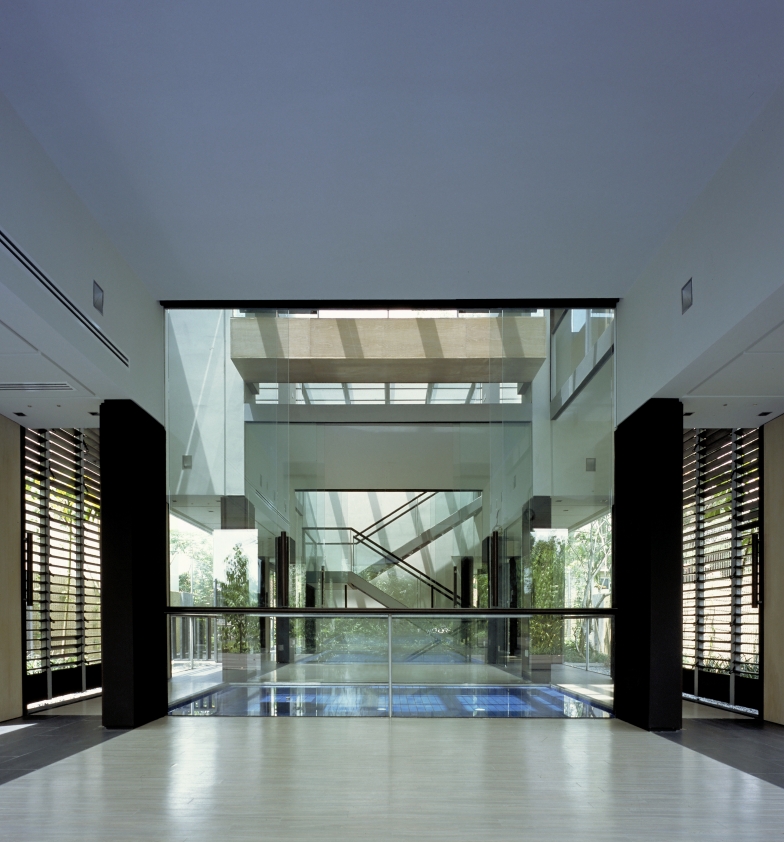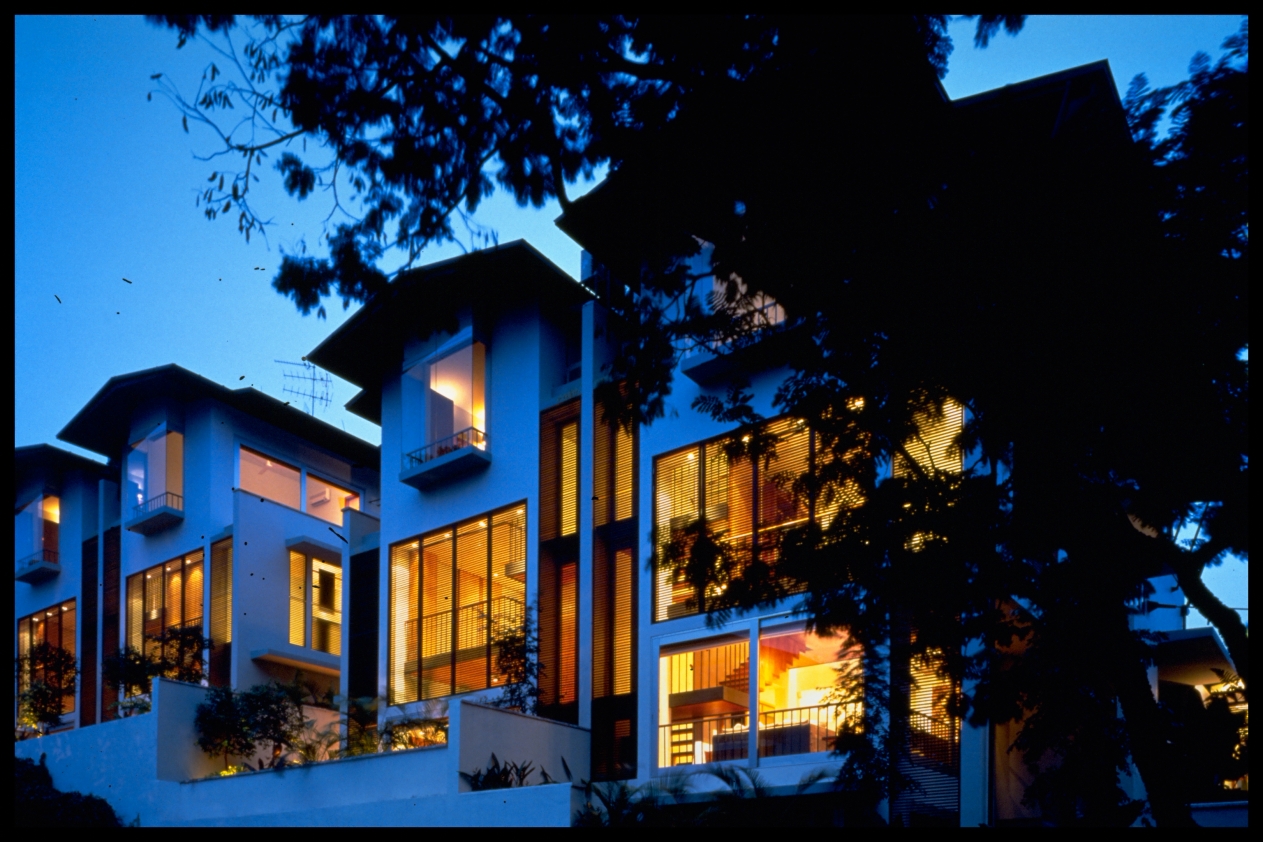Three young owners teamed up to buy an older single bungalow in Singapore and develop it into 4 semi-detached residences. The uneven site boundaries guided the creation of two pairs of similar but different units.
The brief required 3 bedrooms with attached bathrooms, guest room/study, living, dining, and small swimming pool.
To make the most of the small site, the houses were conceived of as “apartments on the ground”, with service areas moved away from the ground floor to free up precious land for recreation and garden views. This allowed the entire ground floor behind the front wall to be opened up to the garden as glass pavilions. Spatially, the ground floor extends to the boundary walls, becoming a composition of water, stone, timber and grass.
Above the ground floor, where privacy becomes an issue, the houses become increasingly more solid.
A central void created private internal views and makes a calm and peaceful heart to the house. The staircase winds up around a service core housing guest bath and utility spaces. The staircase, cantilevered above the pool, is conceived as an “Escher-esque” construction of folded planes of teak and steel, creating a sculptural focus. Electrically controlled canvas blinds can be lowered across the courtyard opening in bad weather, and when privacy is required.


































































